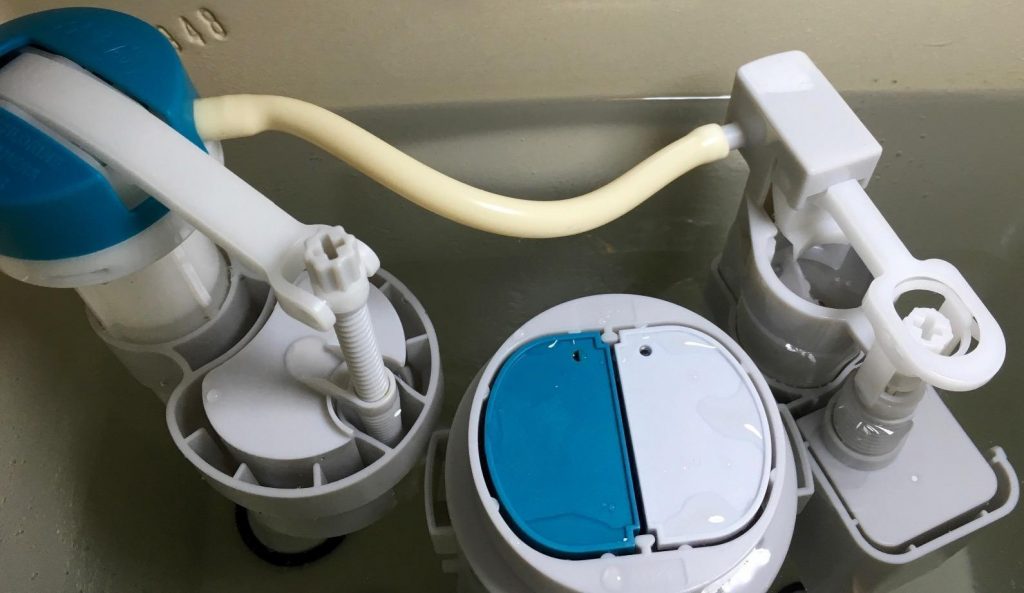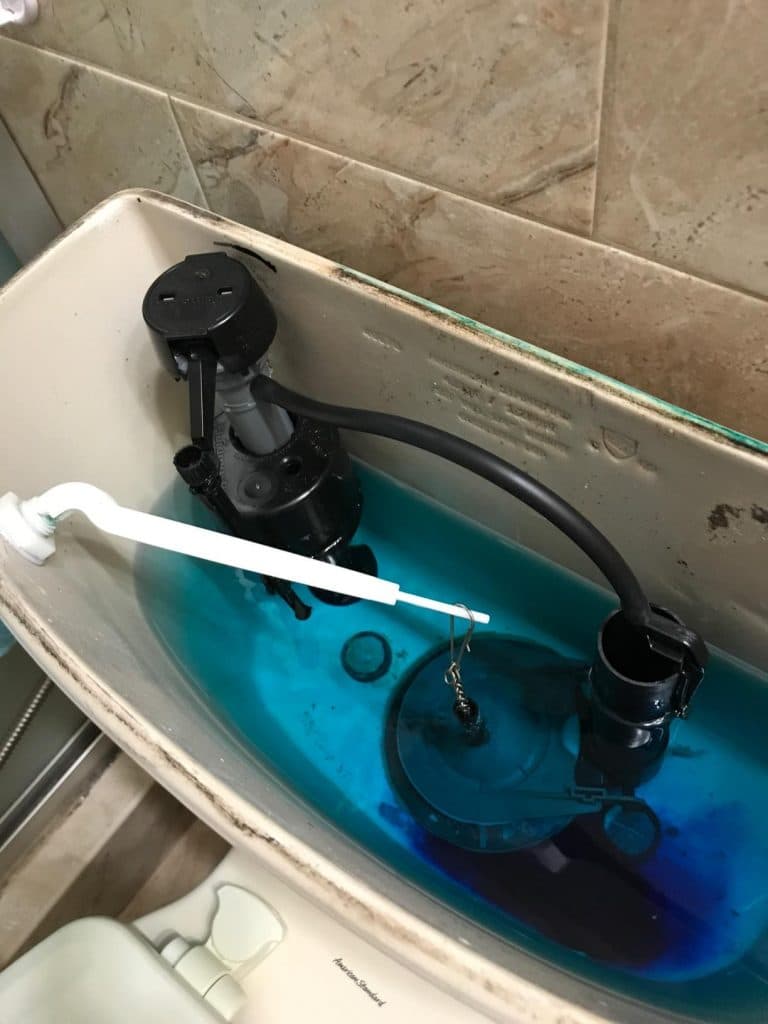2 Ways to Flush a Toilet Without Water
Last Updated on July 28, 2023 by toilethaven
Can you flush a toilet without water? Indeed you can. When your toilet water is off or if your toilet tank can’t fill with water, there is a way out.
To flush a toilet without water, remove the tank lid, fill the tank with water up to just an inch below the overflow tube, then flush the toilet normally. Alternatively, dump a bucket of water in the toilet bowl to generate a strong siphon.
To understand how to flush a toilet without water, let us first examine how a toilet tank works and how water affects the flushing process.
How a Toilet Tank Works.
To flush a toilet, a large volume of water must be dumped in the toilet bowl within a very short period of time. This triggers the siphoning action, whereby the toilet bowl’s contents are sucked into the drainpipe.
To flush a toilet without water (running water in your tank), you must look for a way to dump about a gallon of water or more inside the bowl. This way, you will bypass a toilet tank.
How a Tankless Toilet Works
A tankless toilet has no toilet tank. So how does it work? Water at a very high pressure is delivered into the toilet bowl, enough to initiate the siphoning action. This is why public toilets have no water tanks. They are effective because you don’t need to wait for a toilet tank to refill before using it again.
Sadly, the water pressure in many homes is insufficient to flush a toilet. This is why toilets have a tank. The tank is placed above the bowl so that water can flow from the tank to the bowl using gravity.
1. How to Flush a Toilet without Water Using a Bucket
It is impossible to flush a toilet without water, so they are called flush toilets. Flushing a toilet without water means you have no running water in your toilet/home, so you need to improvise.
This is how to flush a toilet without water:
- Fill a 2-5 gallon bucket with water.
- Hold the bucket handle with one hand while the other hand holds the bottom of the bucket.
- Pour the water into the bowl slowly, then dump it all.
- Face away from the bowl because some water might still splash on your face.
Remember, it is the action of pouring the water fast into the bowl that will initiate the flushing process. If you are too slow, your toilet will not flush.
Think about it, if you used a water hose to flush a toilet, would it work? Definitely no. When you dump the water suddenly into the bowl, the pressure inside the bowl is way higher than that of the toilet drain. This forces the contents of the bowl to be sucked inside the drainpipe.
2. How To Flush a Toilet Without Water By Manually Filling the tank

Modern toilet tanks are designed to use a small amount of water (0.8-1.6 gallons per flush) and deliver a powerful flush. Filling the tank with water and flushing, as usual, is the best way to flush a toilet with no running water.
- Remove the toilet tank lid and place it in a safe place.
- Fill the tank with water just half an inch below the overflow tube.
- Put the toilet tank lid back on and flush the toilet with the flush lever or flush button.
If you have never seen see inside of a toilet tank, there is no need to worry. The overflow tube is a large tube in the middle of the toilet tank that channels water back to the bowl if the fill valve is defective and prevents overflowing.
This method uses less water, and you do not need to worry about waste splashing on your face. Another advantage is that it is possible to clean and rinse the bowl, which is otherwise impossible to flush with a bucket of water.
When you are done flushing, pour a small amount of water into the bowl. This water at the bottom of the toilet bowl prevents sewer gases from entering your bathroom and house.
How to Flush a Toilet Without A Handle

It is possible to flush a toilet without a handle, not that some toilets are made without handles, but sometimes they break. In the case of dual flush toilets with flush buttons, they sometimes get stuck, rendering them unusable.
- Remove the toilet tank lid and place it away in a safe place.
- Inside the tank, look for the lift chain connecting the toilet flapper to the handle arm. Lift the chain, which will, in turn, lift the flapper off the flush valve. Water will flow from the tank to the bowl and hence flush.
- If you have a dual-flush toilet, you will see two buttons at the top of the tank, mostly white and blue. Push any of the buttons to flush the toilet.
- Put the toilet tank lid back on after flushing.
How Much Water Does it Take to Flush a Toilet?
Old toilets were water-inefficient and could use 3 to 6 gallons per flush. The tanks were also mounted very high in the bathroom wall to give the flush waters a bit of speed as they come down to the bowl.
Modern toilets are very water efficient. Most range from 0.8 to 1.6 gallons per flush. This has been possible due to government regulations. In California, for instance, all toilets sold must have a rating of 1.28 gallons of water per flush or less.
Apart from that, most toilets now have dual flush functionality. This makes it possible to use less water when flushing light loads and a little more water for heavier loads.
If, for instance, a toilet is rated as 1.28/1.6 GPF, you should use 1.28 gallons of water for the number one and 1.6 gallons for the number 2. This can save a lot of water cumulatively.
The Niagara Stealth toilet is one of the most water-efficient toilets on the market today. It uses 0.8 gallons of water per flush.
How to Flush a Tankless Toilet without Water
A tankless toilet uses water directly from the water lines under high pressure. Unlike other toilets, it depends on electricity since a small pump delivers water to the bowl at high pressure.
- Fill a bucket with water.
- Lift the toilet lid and seat.
- Dump the water inside the toilet bowl fast enough to initiate the siphoning action. You may need to do this twice to clear and rinse the bowl.
- Remember to face away from the bowl to avoid waste splashing on your face.
Can You Flush Poop With A Bucket of Water?
Yes. Just fill a bucket with water and dump it fast inside the toilet bowl. Remember that it is the action of dumping the water fast in the toilet bowl that initiates the siphoning action of the toilet at the P-trap.
If you casually pour water into the bowl, the siphoning action will not be triggered. The water will drain away or fill the bowl, which will be a bigger mess.
Can You Flush the Toilet When the Water is off?
When your toilet shut-off valve is turned off, your toilet tank is still full of water since it refills immediately after flushing. You can therefore use your toilet one more time.
If you want to turn on the water supply to the toilet, look for the shut-off valve on the rear wall of your toilet on the left-hand side. Turn the valve counterclockwise.
If the shut-off valve is open and no water flows into your toilet tank, check if the main shut-off valve is open. It is mostly a red wheel located next to your water meter. If still no water is filling your tank, it might be an issue with the fill valve.
Can You Flush a Toilet Without Electricity?
Yes and no. If you have a gravity-flush toilet, your toilet will work perfectly well without electricity. If you have a tankless toilet or a pressure-assisted toilet, you will need electricity for your toilet to work.
Tankless toilets use water under pressure to flush the toilet, which is supplied by a pump. The pump will need an electrical connection to compress air. This is one of the disadvantages of tankless toilets.
Toilet Won’t Flush With a Bucket of Water
If you are using a bucket of water to flush a toilet and it’s not being flushed, you are either pouring in the water slowly or the toilet is clogged.
To flush a toilet with a bucket of water, you need to dump the water into the bowl all at once. The sudden release of a large amount of water into the bowl initiates the flushing action at the toilet trap.
If, even after dumping water fast enough on the bowl, you still can’t flush it, the toilet is probably clogged. Use a toilet plunger or snake to unclog it, then try again.